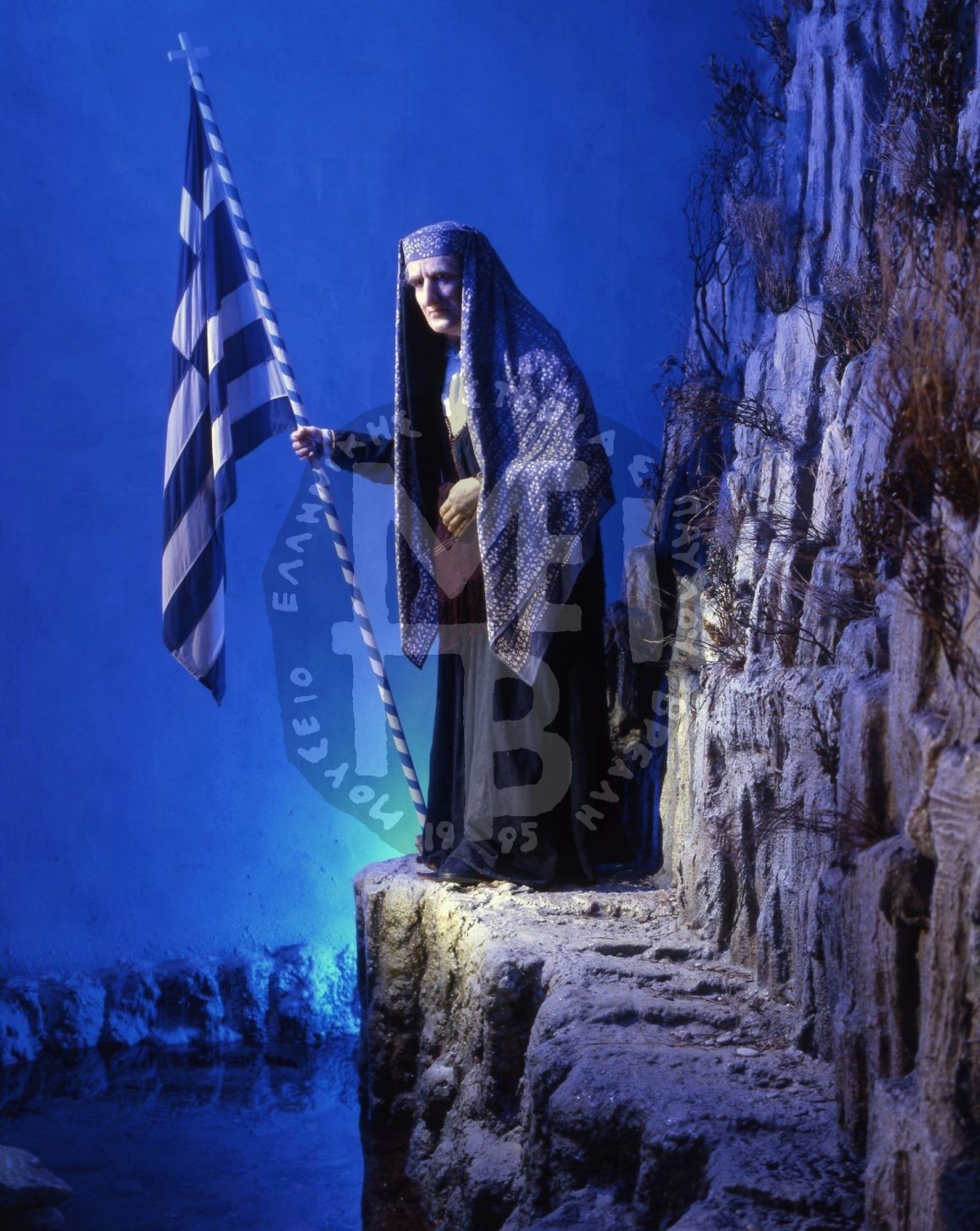“For 34 years, the sole permanent inhabitant of the island across Antifellos, in Asia Minor –a place associated with ancient Lycia– was Despina Achladiotou, the frontierswoman of the Aegean and Greece, ‘the Lady of Ro’. From 1927 until 1961 she lived there and every day she would hoist the Greek flag stating in this way that place she stepped on was Greek. During World War Two, she went to Kastelorizo where she took active part in the troop’s missions to Middle East by hiding and helping officers and soldiers to escape. At that time, most of the inhabitants of Kastelorizo had left for the nearby islands, Cyprus and Egypt.
Some plain words coming from her: ‘I love the barren islands of Kastelorizo and Ro. In 1943 I was left alone on Kastelorizo with my blind mother, when all the inhabitants would leave to Middle East and Cyprus. With the Greek flag hoisted and my love for Greece rooted deep inside, I survived the hardships…’, ‘…naturally, life on Ro isn’t that pleasant, but you sense Greece more, lost as you are in the sea, a few hundreds miles away from the Turkish coasts’. ‘I want the Greek flag placed by my side in the Grave.’
On May 14, 1982, the ninety-year-old Despina Ahladiotou was buried with honors fit to a national heroine. Her coffin was covered with the Greek flag. Her memory serves as a bridge bringing Ancient Greece of the 9th and 8th century B.C. settlers, the Byzantium, tradition and the civilization of the lost homelands together…
We leave the corner paved place behind and walk up. Passing through a white arch, we find ourselves in a room of an island house, white and refreshing. After the mountain wars, I make a pause here. Through a small arched door on the left we can see this theme. From this spot, I have created an axis of a small angle by means of a narrow paved corridor leading to another arched little door. These elements, combined with the laying out of the room the visitor walks in as well as the motion of the water under the feet of the main figure, direct our look to the back: The blue of the sea and the sky. Also, the woods of the corridor roof help in creating perspective background. On the right, this background is highlighted by means of rocks forming a path to the sea at the end of which stands the lady of Ro. In order to comprehend the scales in relation to the island place, I have left a stone wall with some of its plaster eroded by the sea, on the outer building.
I have used cement, sackcloth, gypsum, neuro-metal, wood and stones. This composition, in particular, due to its long horizontal axis, is adjacent to many themes: it’s on the right of the ‘slaughter’, on the left of ‘Cyprus’, behind ‘Nikitaras’, up on the left of ‘Pindos’, down on the left of ‘Crete’, and diagonally up on the left of ‘Kougi’.
I was glad to have encountered abundant material from newspaper articles, interviews, even video recordings, so as to work her portrait accurately based on real data.
And I said, looking all around:
Island,
eternal glory at the sea,
rooted in the bustling space
and in Homer’s verse bathed,
sunk in the hymn.
Agelos Sikelianos”

